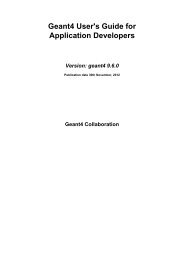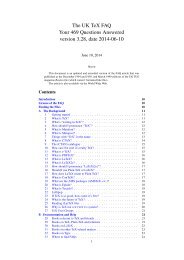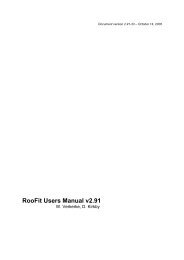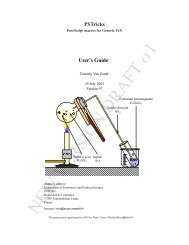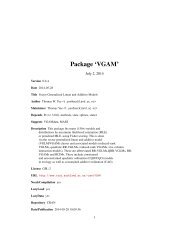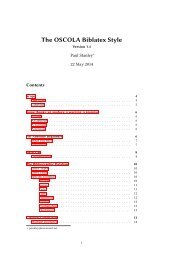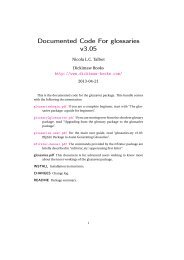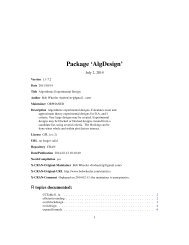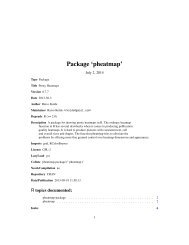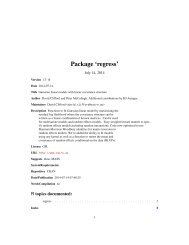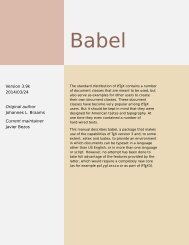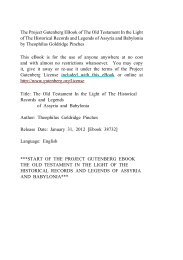The microtype package
The microtype package
The microtype package
Create successful ePaper yourself
Turn your PDF publications into a flip-book with our unique Google optimized e-Paper software.
HINTS AND CAVEATS 259 Hints and caveatsUse settings that match your font. Although the default settings should give reasonableresults for most fonts, the particular font you happen to be using may havedifferent character shapes that necessitate more or less protrusion. In particular,italic letter shapes may differ wildly in different fonts, hence I have decided againstproviding default protrusion settings for them. <strong>The</strong> file test-<strong>microtype</strong>.tex mightbe of some help when adjusting the protrusion settings for a font.Don’t use too large a value for expansion. Font expansion is a feature that issupposed to enhance the typographic quality of your document by producing amore uniform greyness of the text block (and potentially reducing the number ofnecessary hyphenations). When expanding or shrinking a font too much, the effectwill be turned into the opposite. Expanding the fonts by more than 2%, i.e., settinga stretch limit of more than 20, should be justified by a typographically trainedeye. If you are so lucky as to be in the possession of multiple instances of a MultipleMaster font, you may set expansion limits to up to 4%.Don’t use font expansion for web documents (with older pdfTEX versions). WithpdfTEX versions older than 1.40, each expanded instance of the font will be embeddedin the PDF file, hence the file size may increase by quite large a factor(depending on expansion limits and step). <strong>The</strong>refore, courtesy and thriftiness ofbandwidth command it not to enable font expansion when creating files to bedistributed electronically. With pdfTEX 1.40, which uses a different technique ofexpansion, the file size increase can be neglected.You might want to disable protrusion in the Table of Contents. In unfortunatesituations, enabled protrusion might internally alter the line length in the TOC andsimilar lists in such a way that an excess leader dot will fit in. <strong>The</strong> solution is totemporarily disable protrusion for the TOC:\<strong>microtype</strong>setup{protrusion=false}\tableofcontents\<strong>microtype</strong>setup{protrusion=true}You might want to disable protrusion in verbatim environments. As you know bynow, <strong>microtype</strong> will by default activate character protrusion for all fonts containedin the font set ‘alltext’. This also includes the typewriter font. Although it doesmake sense to protrude the typewriter font if it appears in running text (like,for example, in this manual), this is probably not desirable inside the verbatimenvironment. However, <strong>microtype</strong> has no knowledge about the context that a fontappears in but will solely decide by examining its attributes. <strong>The</strong>refore, you haveto take care of disabling protrusion in verbatim environments for yourself (thatis, if you don’t want to disable protrusion for the typewriter font altogether, bychoosing a different font set). While the \<strong>microtype</strong>setup command has of coursebeen designed for cases like this, you might find it tiresome to repeat it every timeif you are using the verbatim environment frequently. <strong>The</strong> following line, added tothe document’s preamble, would serve the same purpose:\g@addto@macro\@verbatim{\<strong>microtype</strong>setup{activate=false}}



